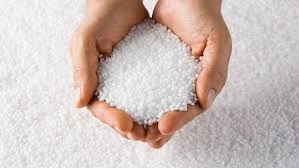The Role of Chemicals in Sewage Treatment
Sewage treatment is a critical process aimed at managing and mitigating the pollution and health risks associated with wastewater. The use of chemicals in sewage treatment plays a vital role in enhancing the efficiency of the process, ensuring the safe disposal or reuse of treated effluent. The intricate relationship between chemicals and the sewage treatment process is fundamental for maintaining public health and environmental integrity.
Importance of Sewage Treatment
Sewage, primarily composed of water along with various organic and inorganic substances, can pose serious hazards when released untreated into the environment. Effective sewage treatment helps to remove harmful pathogens, nutrients, and contaminants that could otherwise lead to waterborne diseases and environmental degradation. As urban areas continue to grow, the volume of sewage produced has surged, necessitating the employment of effective treatment methods.
Types of Chemicals Used in Sewage Treatment
Chemicals employed in sewage treatment can be broadly categorized into several types based on their functions
1. Coagulants and Flocculants These chemicals are crucial in the primary treatment of sewage. Coagulants, such as aluminum sulfate (alum) and ferric chloride, are added to sewage to destabilize suspended particles. Once destabilized, these particles can then agglomerate into larger clusters or flocs. Flocculants, such as polyacrylamides, help these flocs to further aggregate and settle out of the liquid phase. This process significantly reduces the turbidity of the wastewater.
2. Disinfectants The primary goal of disinfection is to eliminate pathogenic microorganisms from treated sewage before it is released into the environment or reclaimed for use. Common disinfectants include chlorine, ozone, and ultraviolet (UV) light. Chlorination is one of the most widely used methods due to its effectiveness and relative cost efficiency. However, it can produce harmful by-products, leading to increased scrutiny and an ongoing search for safer alternatives like UV treatment.
chemicals used in sewage treatment

3. pH Adjusters The pH of wastewater plays a crucial role in the success of many treatment processes. Chemicals such as sulfuric acid or sodium hydroxide are used to adjust the pH of sewage to optimize the conditions for microbial activity in biological treatment processes. Maintaining an appropriate pH level can enhance the breakdown of organic material and improve the overall efficiency of the treatment system.
4. Nutrient Removal Agents Excessive nutrients, particularly nitrogen and phosphorus, can lead to eutrophication in water bodies, resulting in detrimental algal blooms. Chemicals like ion exchange resins and biological agents based on activated sludge are often utilized to promote the removal of these nutrients. Additionally, chemical precipitation methods can be employed to remove phosphorus from wastewater systems effectively.
5. Odor Control Chemicals Unpleasant odors can emanate from sewage treatment plants due to decomposition of organic materials. Chemicals such as activated carbon and various odor neutralizers may be employed to mitigate these odors. Managing odors not only improves the working conditions at treatment facilities but also reduces complaints from nearby communities.
Environmental Concerns and Future Directions
While the use of chemicals in sewage treatment has proven effective, it is essential to consider their environmental implications. Chemical residues, by-products, and potential toxicity can pose risks to ecosystems and human health. Regulatory bodies are increasingly advocating for more sustainable practices, including the use of less toxic alternatives and the integration of advanced technologies like membrane bioreactors and constructed wetlands.
Moreover, ongoing research is focused on optimizing the dosage and timing of chemical additions, as well as exploring innovative approaches such as biotechnological solutions that harness the power of microorganisms for more holistic sewage treatment.
Conclusion
Chemicals play an indispensable role in the sewage treatment process, enhancing its efficiency and effectiveness. However, as our understanding of the environmental impact of these chemicals evolves, so too must our approaches to sewage management. Striking a balance between effective treatment and environmental stewardship is crucial for the sustainability of water resources, ensuring a cleaner and safer future for generations to come.

